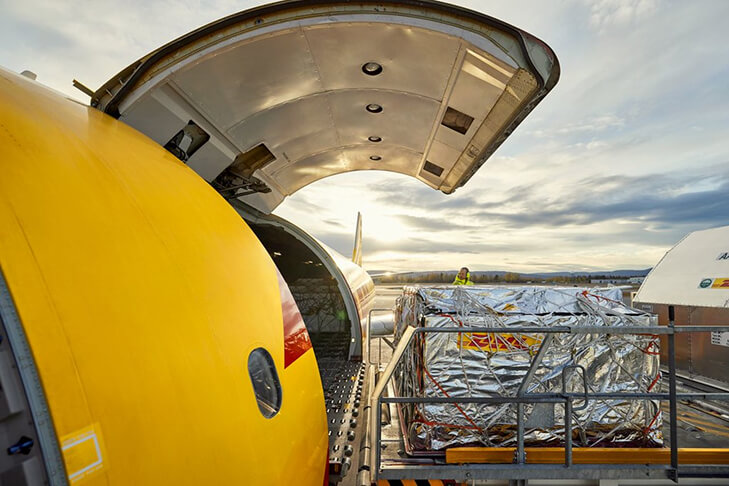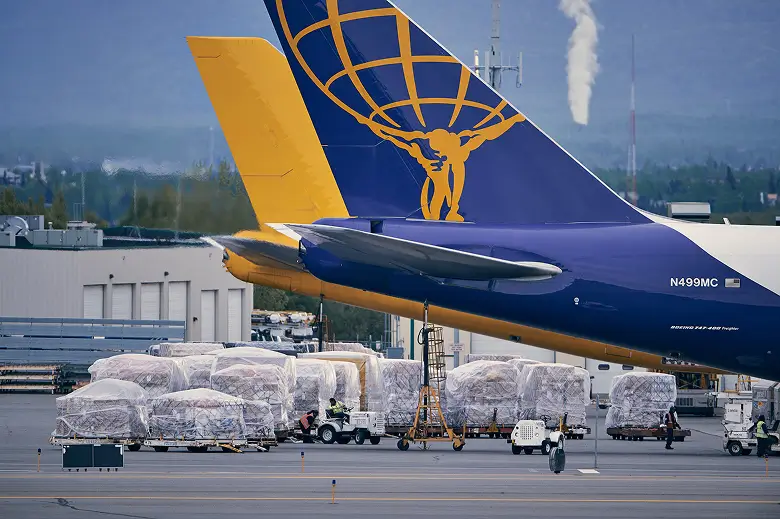AOG at 2am: the first 10 data points your broker needs
When an Aircraft on Ground (AOG) emergency strikes at 2am, every minute counts. Charter brokers need specific information immediately to mobilise parts transport, engineer deployment, and replacement aircraft. Having these 10 data points ready can reduce response time from hours to minutes and get your aircraft operational faster.
The middle-of-the-night call that no operator wants to receive: "We've got an AOG situation." Whether it's a critical component failure, unexpected maintenance requirement, or regulatory compliance issue, aircraft grounded away from base create cascading operational and financial pressures that intensify with every passing hour.
Here's the essential information your charter broker needs to mobilise AOG support immediately, based on our experience coordinating emergency responses across Europe and beyond.
The 10 critical data points for immediate AOG response
1. Aircraft location and access constraints
What we need: Exact airport code, gate/parking position, and any access restrictions.
Why it matters: Not all airports accept charter traffic 24/7, and some require advance handling arrangements. Remote locations may have customs limitations or require special ground equipment. Cargo Charter operations to smaller airports often need coordination with local handling agents who may not be available outside business hours.
Example scenario: Aircraft grounded at a regional airport in Eastern Europe requires engine component. Airport closes to commercial traffic at midnight but can accommodate emergency charter with 2-hour advance notice to ground handling team.
2. Exact component specification and dimensions
What we need: Part number, manufacturer, dimensions, weight, and any hazardous material classifications.
Why it matters: Aircraft loading doors have size limitations, and some components require specific handling or packaging. Weight distribution affects aircraft selection and loading procedures. Our experience shows that incorrect specifications lead to delays at origin or destination when parts don't fit aircraft doors or require re-packaging.
Critical consideration: Components with hazardous material classifications (batteries, chemicals, pressurised items) require additional documentation and may restrict aircraft options or routing.
3. Component origin and availability confirmation
What we need: Supplier location, confirmed availability, and collection timeline.
Why it matters: Many AOG responses fail because parts aren't actually available when promised, or suppliers are closed/unreachable. We coordinate directly with suppliers to confirm collection timing and ensure parts are ready when aircraft arrives. This includes customs documentation for international movements.
Operational reality: Weekend AOG calls often involve suppliers who are closed until Monday morning, requiring alternative sourcing or temporary repair solutions.
4. Maintenance team deployment requirements
What we need: Number of engineers, tool requirements, estimated repair duration, and certification needs.
Why it matters: Engineers travelling with specific tools may affect baggage allowances and aircraft selection. Some repairs require certified personnel with specific aircraft type ratings. International deployments require work permits and customs declarations for technical equipment.
Practical example: Replacing an engine component requires two certified engineers, specialised tooling (150kg excess baggage), and estimated 8-hour repair window. This information affects aircraft size selection and crew duty planning.
5. Time criticality and operational impact
What we need: Revenue flights affected, passenger connections, and cargo commitments at risk.
Why it matters: Understanding the downstream impact helps prioritise response speed versus cost optimisation. High-impact situations justify direct charter to secondary airports; lower-impact scenarios might use scheduled freight with courier backup. Our Special Mission Charter team handles situations where timing is absolutely critical.
Decision framework: Morning departure with 200 passengers justifies immediate charter response; positioning flight for maintenance can often wait for scheduled freight options.
6. Alternative aircraft availability for passenger operations
What we need: Whether replacement aircraft is available, passenger count, and route requirements.
Why it matters: Sometimes passenger charter is more urgent than component delivery, especially for scheduled service recovery. We maintain relationships with operators who can provide replacement aircraft for passenger service whilst repairs proceed.
Coordination complexity: Replacement passenger aircraft requires crew, insurance coordination, and regulatory approvals, often taking longer than parts delivery.
7. Customs and documentation requirements
What we need: International movement details, ATA Carnet availability, and temporary import requirements.
Why it matters: Cross-border parts movement can create delays without proper documentation. Some components require temporary import permits; others qualify for ATA Carnet procedures. Weekend customs operations are limited at many airports.
Documentation essentials: Commercial invoice, packing list, airworthiness certificates for some components, and customs contact information for expedited clearance.
8. Budget parameters and approval authority
What we need: Budget range, approval requirements, and cost versus time trade-offs.
Why it matters: Emergency situations have higher costs, but understanding budget constraints helps optimise aircraft selection and routing. Sometimes multi-leg charter with smaller aircraft costs less than single direct flight with larger aircraft.
Transparent costing: AOG charter includes aircraft positioning, crew duty time, ground handling, customs clearance, and potentially overnight charges. Clear budget discussion prevents delays during quote approval.
9. Communication chain and decision authority
What we need: Primary contact, backup contact, and decision-making authority for changes.
Why it matters: AOG situations evolve rapidly, and delays in approvals create operational problems. Clear communication chains ensure quick decisions when aircraft availability changes or routing adjustments become necessary.
Operational continuity: Night-time emergencies require contacts who can approve expenditure and route changes without waiting for morning management availability.
10. Alternative solutions and contingency preferences
What we need: Backup component sources, temporary repair acceptance, and time/cost trade-offs.
Why it matters: First-choice solutions aren't always available. Understanding acceptable alternatives—different component sources, temporary repairs pending permanent fixes, or scheduled freight with expedited ground transport—provides options when direct charter isn't available or cost-effective.
Flexibility advantage: Operators willing to consider multiple approaches often achieve faster resolution than those insisting on single solutions.
Common AOG response scenarios and typical timelines
Scenario 1: European component to regional airport
Situation: Engine sensor failure on regional jet at secondary airport in France, replacement part available in Frankfurt.
Typical response: Light cargo aircraft chartered for direct delivery, 4-6 hour total timeline from call to part delivery, including aircraft positioning and customs clearance.
Key factors: Secondary airport access, customs availability, and ground transport to aircraft parking position.
Scenario 2: Transatlantic component movement
Situation: Avionics component required from United States to grounded aircraft in Europe, high-value cargo requiring secure transport.
Typical response: Commercial freight with onboard courier backup, 12-18 hour timeline depending on scheduled service availability and connections.
Alternative approach: Direct charter aircraft for time-critical situations, 8-10 hour timeline but significantly higher cost.
Scenario 3: Engineer deployment with tools
Situation: Complex repair requiring manufacturer-certified engineers with specialised equipment.
Response coordination: Combined charter for personnel and tools, often using larger aircraft to accommodate excess baggage and ensure crew comfort for immediate work upon arrival.
Timeline considerations: Engineer availability often constrains response more than aircraft availability, especially for specialised aircraft types.
The cascade effect: how preparation reduces AOG impact
Immediate response phase (0-2 hours):
Having these 10 data points ready enables charter coordination to begin immediately rather than spending hours gathering information. Quick decisions on aircraft type, routing, and timeline prevent delays that compound throughout the response chain.
Mobilisation phase (2-8 hours):
Accurate information ensures correct aircraft selection, proper documentation, and efficient loading procedures. Incorrect specifications discovered during loading create additional delays when aircraft doors won't accommodate components or customs documentation is incomplete.
Resolution phase (8-24 hours):
Clear communication and decision authority prevent delays when situations change. Weather, slot restrictions, or parts availability changes require quick decisions that keep response on schedule.
Recovery phase (24+ hours):
Understanding alternative solutions and backup approaches enables quick pivots when primary plans encounter obstacles. Flexibility in approach often determines whether resolution takes one day or several days.
Regulatory and safety considerations for AOG charters
Aviation authority notifications: Some AOG situations require reporting to civil aviation authorities, particularly if safety-related components are involved. Charter operations must comply with operator licensing and route approval requirements.
Hazardous material handling: Aircraft components containing batteries, chemicals, or pressurised systems require dangerous goods documentation and trained ground handling. Not all charter aircraft accept dangerous goods, limiting options.
Customs and security procedures: AOG urgency doesn't eliminate customs requirements. Some airports expedite emergency clearance, but documentation must be complete and accurate to avoid additional delays.
Insurance and liability coverage: Charter operations for AOG support require appropriate insurance coverage for high-value components. Transit insurance protects against damage during transport but must be arranged in advance.
Documentation checklist for AOG charter operations
Before aircraft departure:
- Commercial invoice with accurate component description and value
- Packing list with dimensions, weight, and piece count
- Airworthiness certificates for critical components
- Customs contact information for destination airport
- Insurance certificates covering transit and handling
During transit:
- Flight progress monitoring with estimated arrival times
- Ground handling coordination at destination
- Customs clearance preparation with advance documentation
- Alternative routing options if weather or slots affect primary plan
Upon arrival:
- Customs clearance coordination and expedited processing
- Ground transport from cargo terminal to aircraft position
- Component inspection and acceptance by maintenance team
- Documentation handover and repair commencement coordination
Cost management strategies for AOG situations
Aircraft selection optimisation: Right-sizing aircraft to component requirements reduces costs whilst maintaining timeline performance. Oversized aircraft increase positioning and operating costs without timeline benefits.
Routing efficiency: Direct routing minimises timeline but may not optimise cost. Multi-leg routing with scheduled connections can reduce costs for less time-critical situations.
Ground handling coordination: Efficient ground handling and customs clearance procedures reduce aircraft ground time and associated costs. Pre-positioned ground support equipment eliminates delays.
Alternative sourcing evaluation: Multiple component source options provide cost and timeline comparisons. Sometimes more expensive parts with better availability create better overall value than delayed cheaper alternatives.
Understanding these cost factors helps make informed decisions about charter versus alternative solutions. Our cargo charter cost analysis provides detailed frameworks for evaluating options.
Building resilience: proactive AOG preparation
Supplier relationships: Establishing relationships with component suppliers across multiple locations provides more options during emergencies. Known suppliers with confirmed inventory and established processes reduce response time.
Documentation templates: Pre-prepared customs and shipping documentation templates speed up response when time matters. Having airworthiness certificates and commercial invoices formatted correctly eliminates preparation delays.
Communication protocols: Established communication chains with clear decision authority prevent approval delays during night-time emergencies. Backup contacts ensure continuity when primary contacts are unavailable.
Charter broker partnerships: Working with charter brokers who understand AOG requirements and maintain 24/7 availability ensures immediate response capability. Established relationships provide priority service when aircraft availability is limited.
Regular AOG preparedness reviews identify potential improvement areas and ensure contact information remains current. The goal is transforming AOG emergencies from chaotic responses into systematic, efficient operations.
Key takeaways for AOG preparedness
- Information readiness: Having the 10 critical data points prepared reduces response time from hours to minutes
- Multiple options: Understanding alternative solutions—different sources, temporary repairs, various transport methods—increases success probability
- Clear communication: Established decision-making authority and contact protocols prevent approval delays during emergencies
- Cost awareness: Understanding charter cost components enables informed decisions between speed and cost optimisation
- Documentation preparation: Pre-positioned paperwork and supplier relationships accelerate response when minutes count
AOG situations test operational resilience and decision-making under pressure. Preparation doesn't eliminate emergencies, but it transforms responses from chaotic reactions into systematic solutions that minimise downtime and restore operations efficiently.
Coordinating your AOG response strategy
If your operations face potential AOG situations, having established response protocols and broker relationships provides critical advantages when emergencies occur. Every AOG situation presents unique challenges, but systematic preparation and clear information management dramatically improve response effectiveness.
We maintain 24/7 availability specifically for AOG support because we understand that aircraft emergencies don't respect business hours. Our approach focuses on gathering the essential information quickly, evaluating all available options objectively, and mobilising the most effective solution for your specific situation.
For AOG support services and emergency response planning, request a cargo charter quote to discuss your specific requirements and establish response protocols before emergencies occur.
Get in touch with any questions about your air charter needs

.avif)

